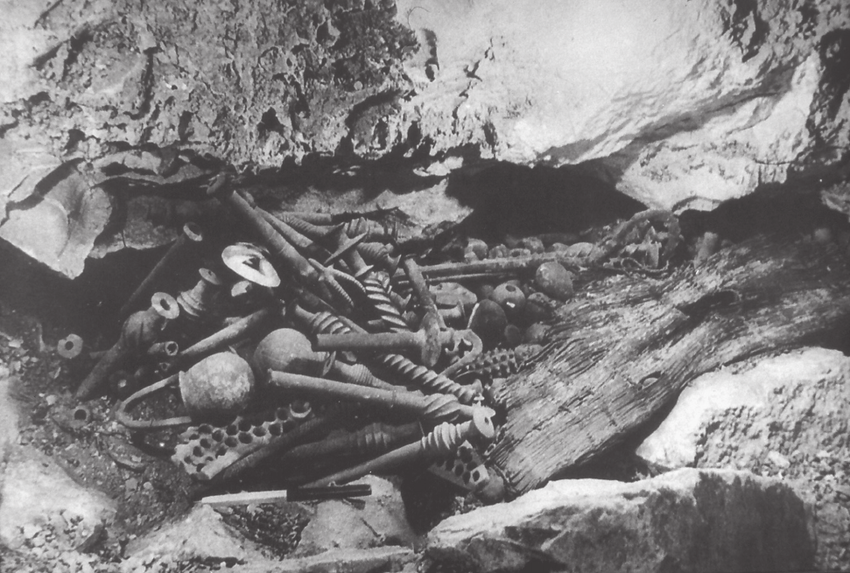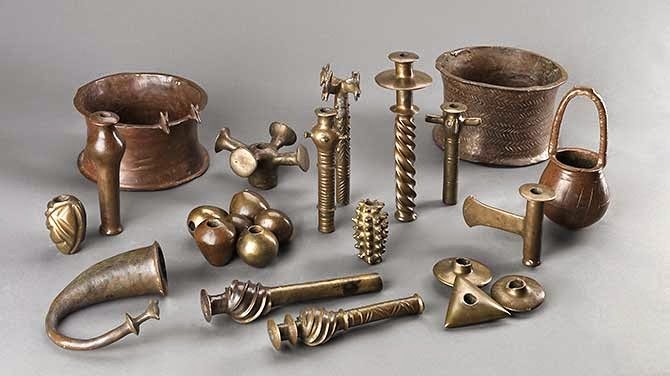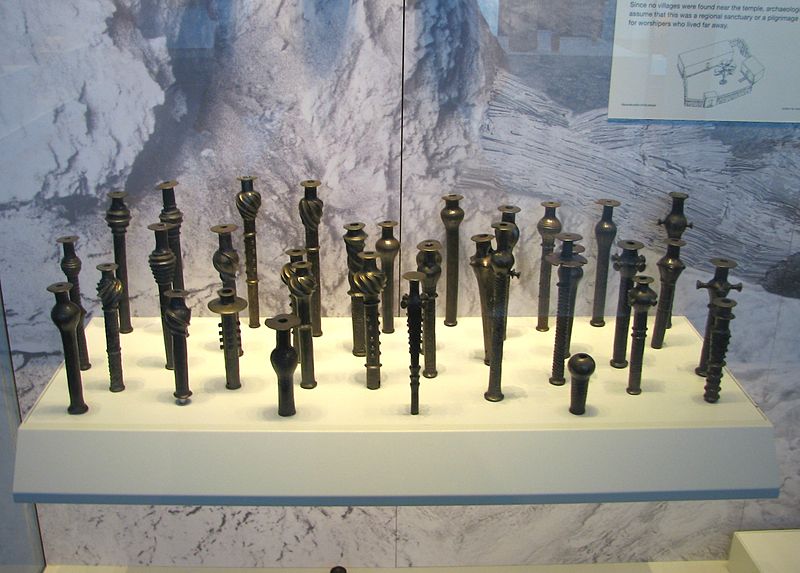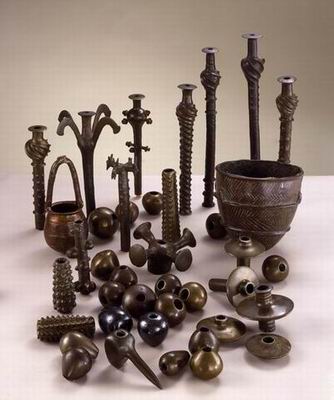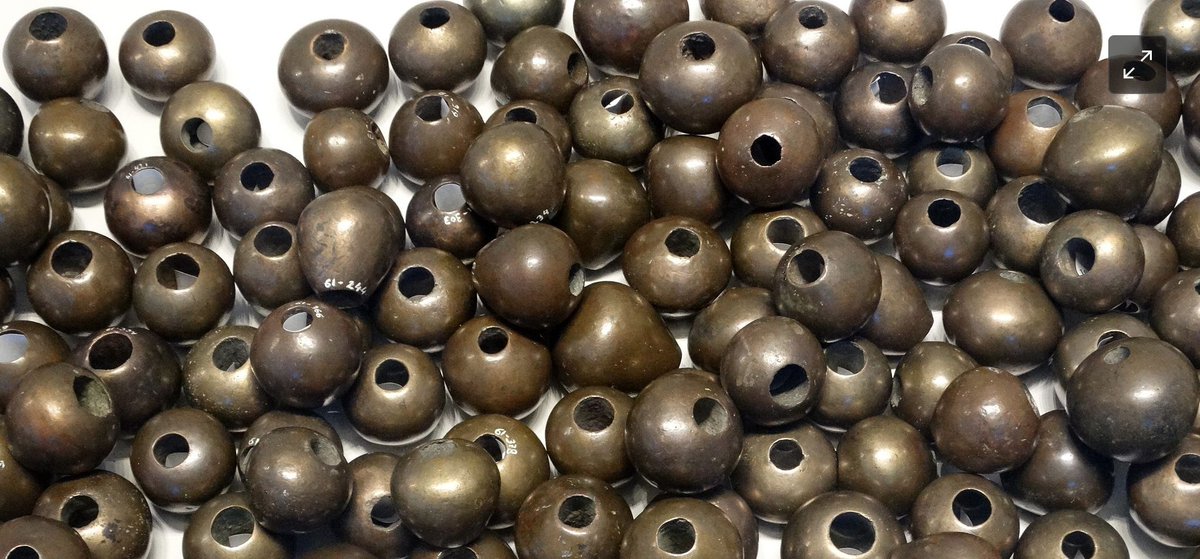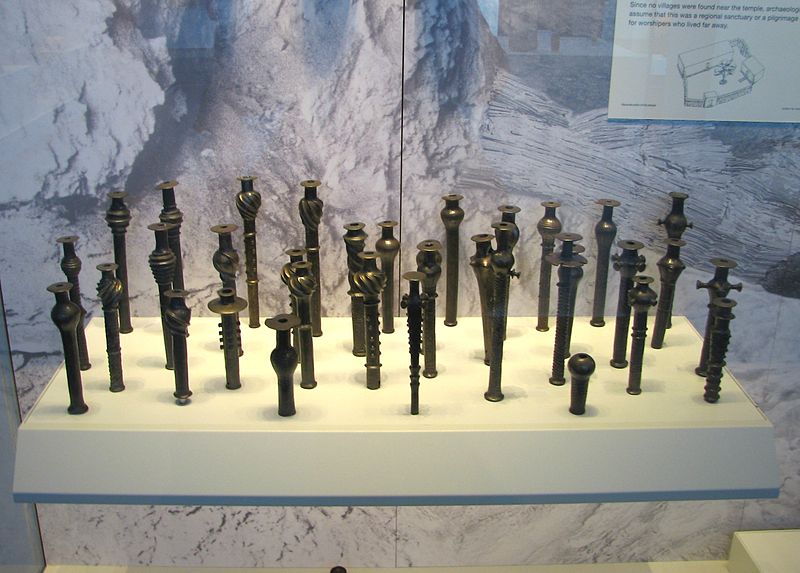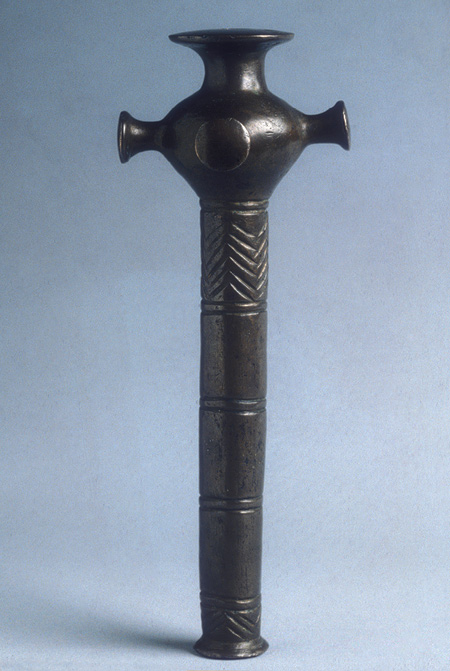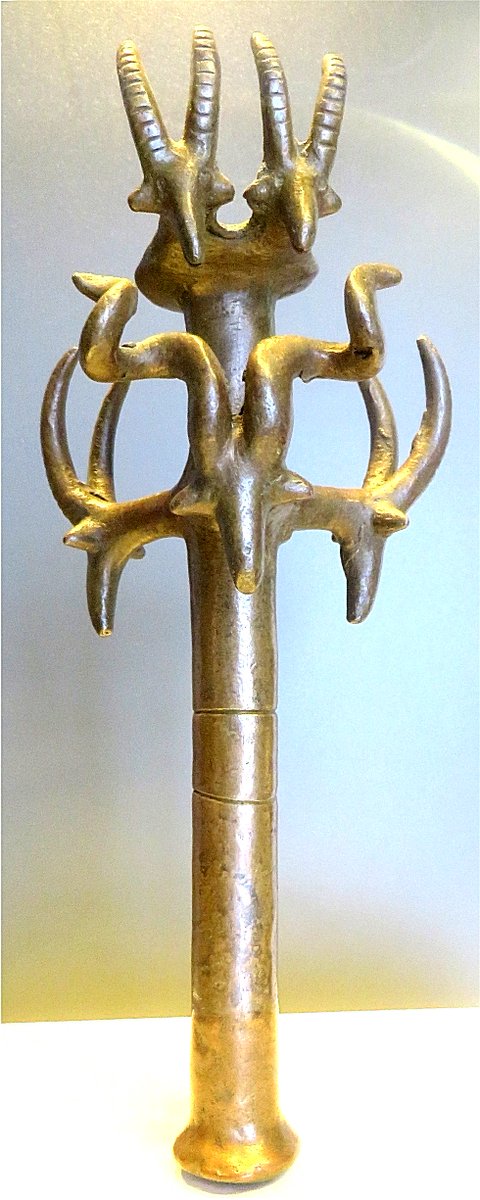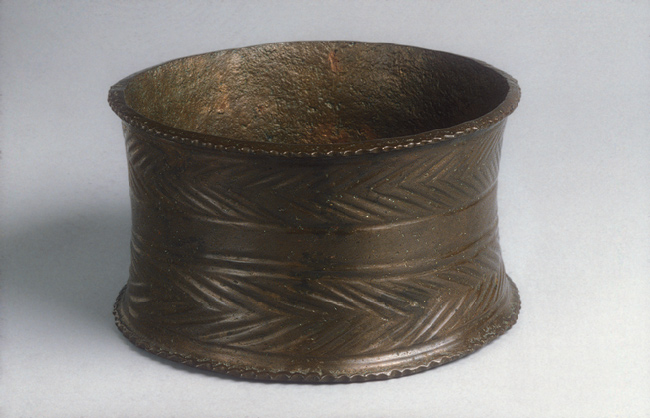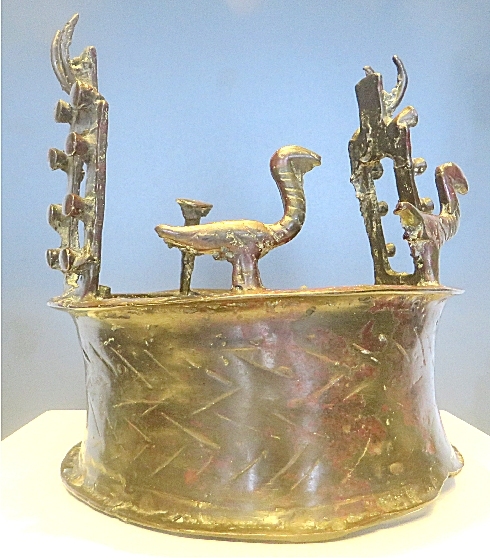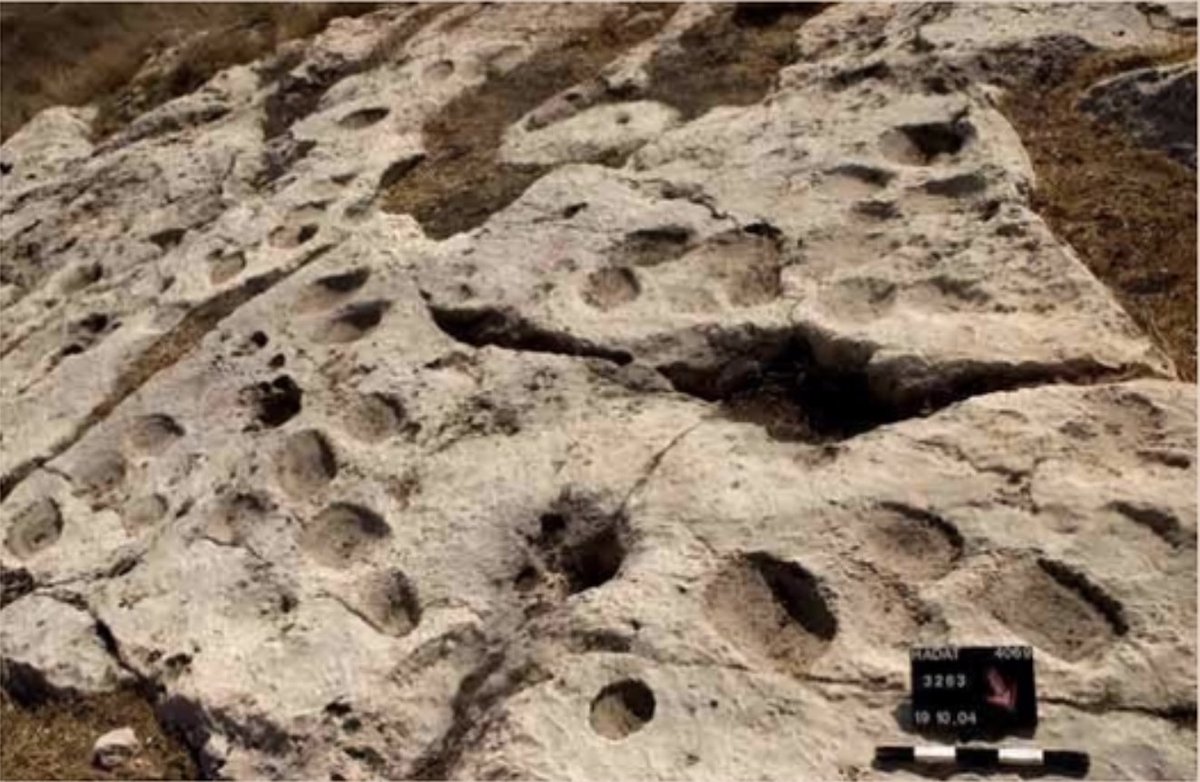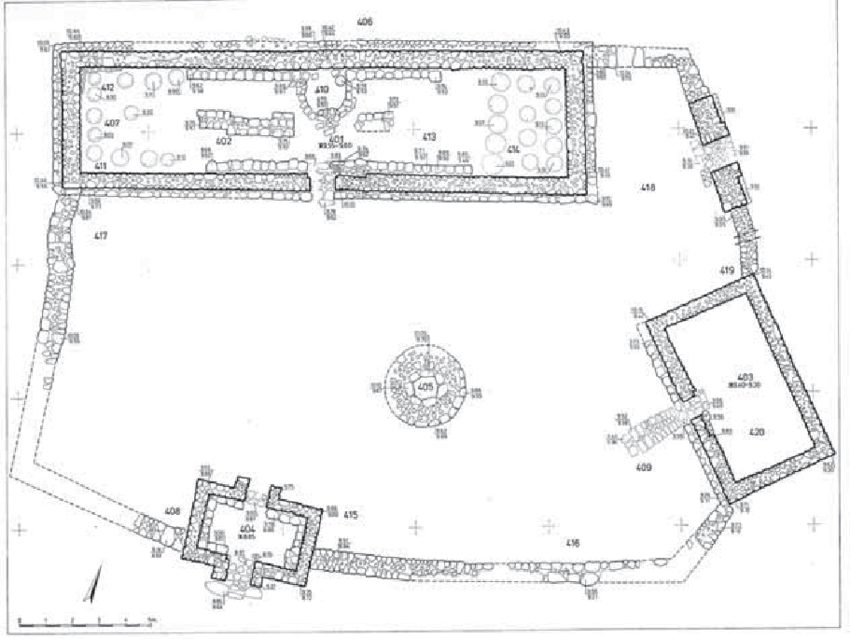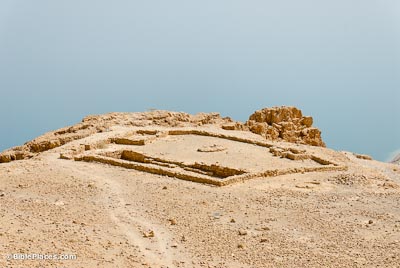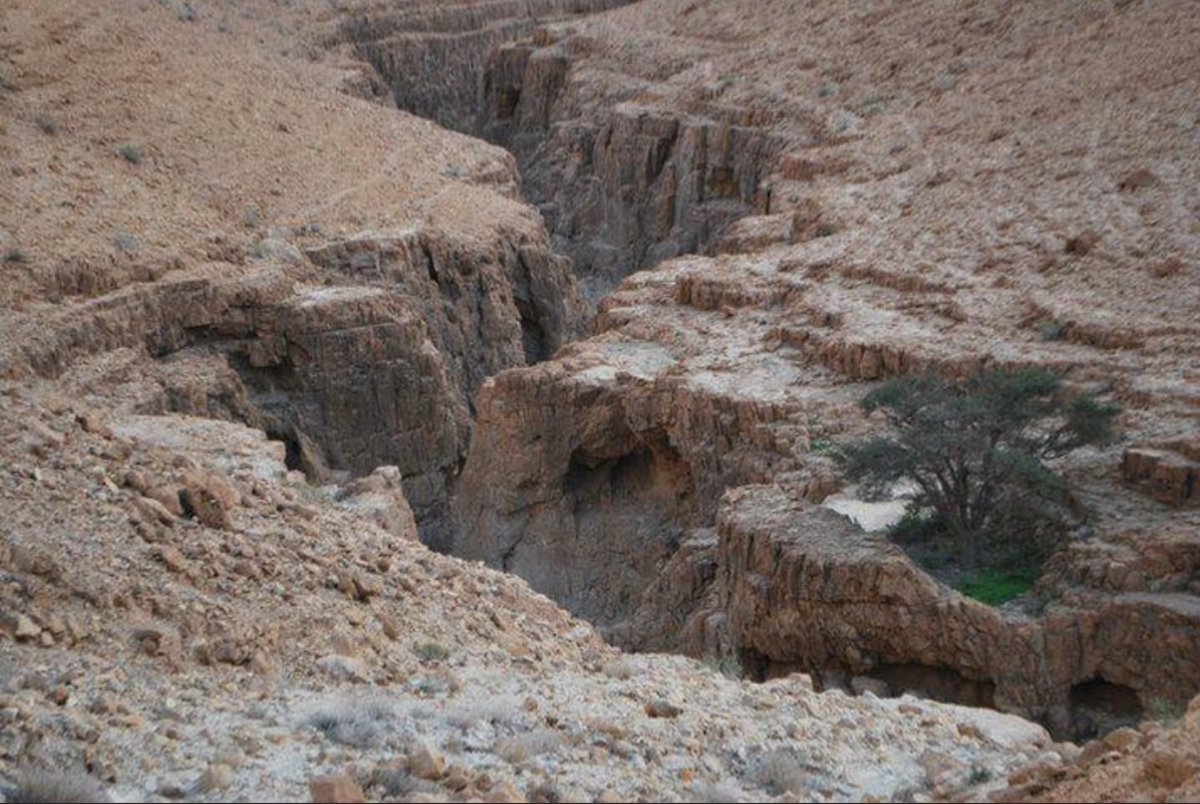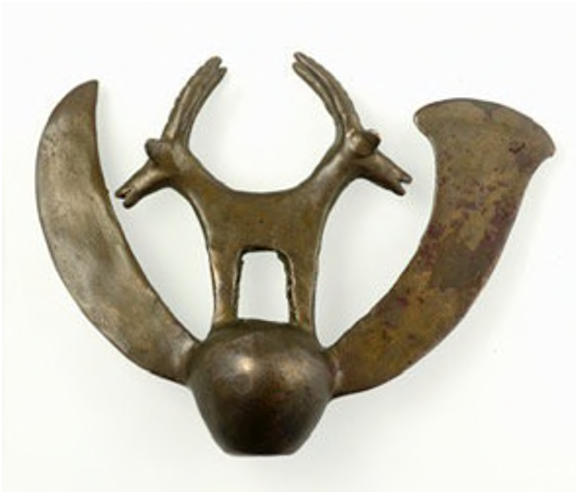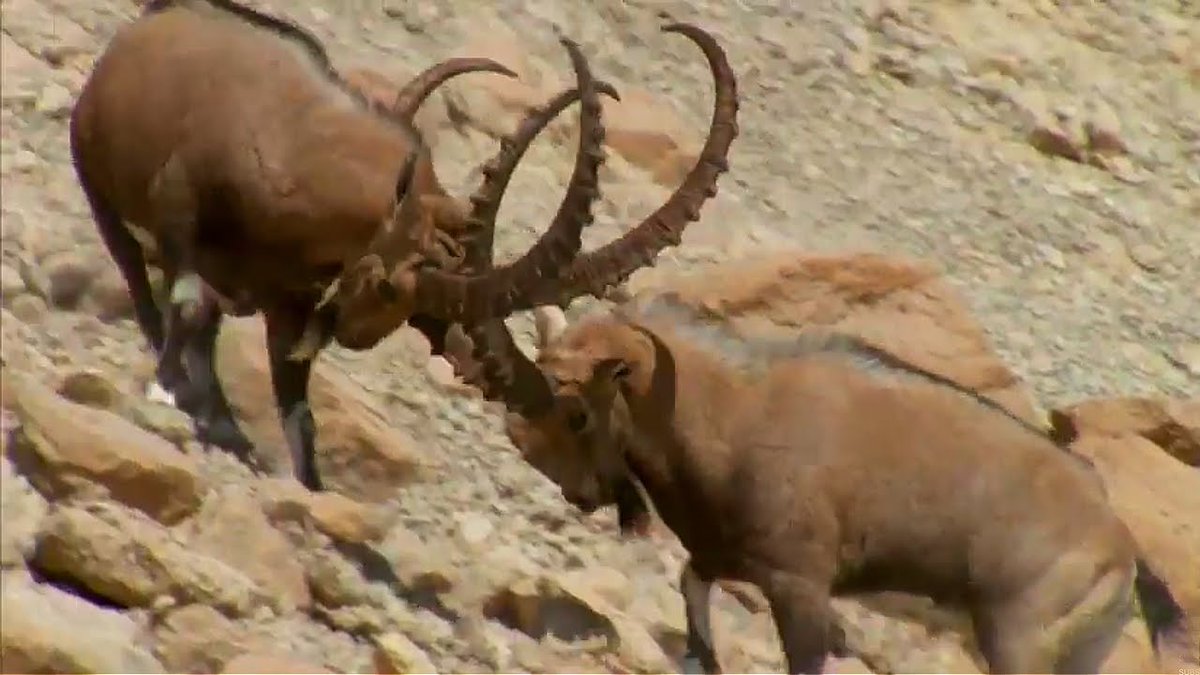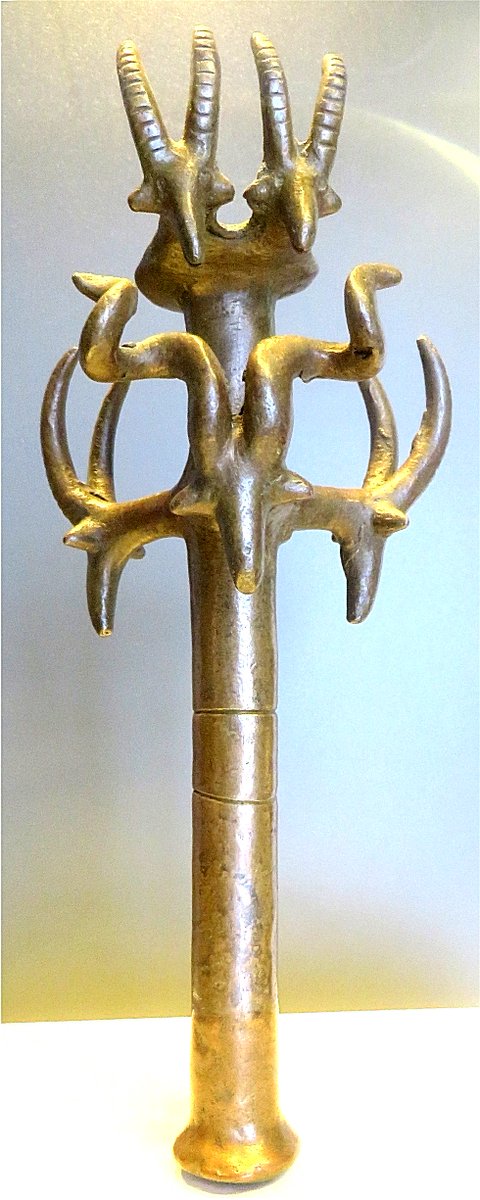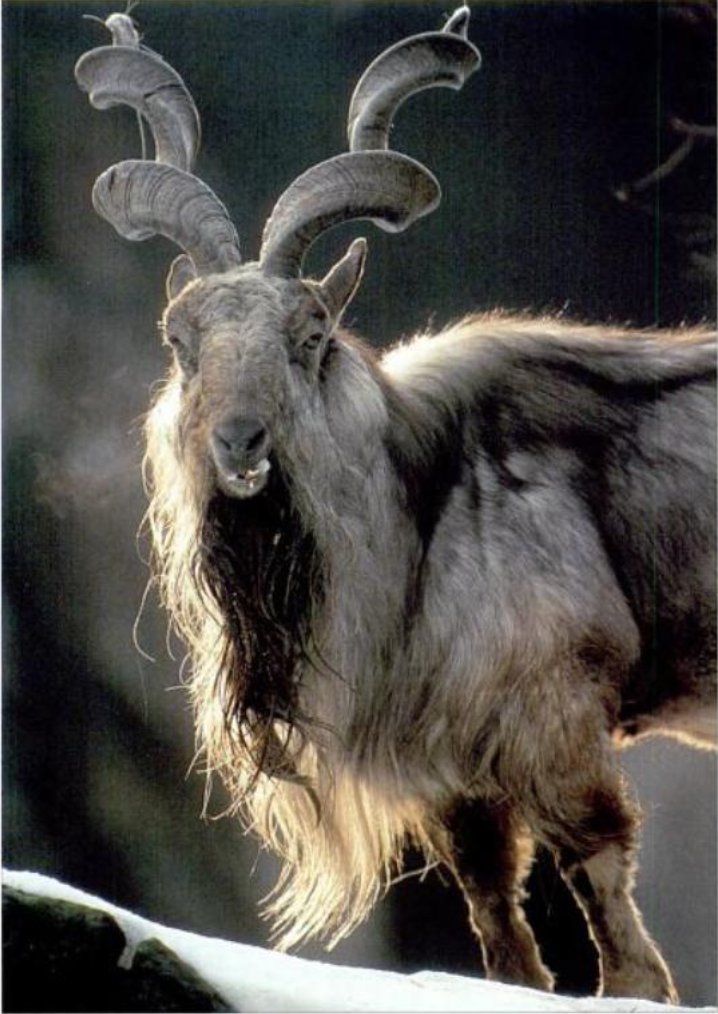Thread: In 1961, an extraordinary treasure was found in a cave in Israel. Hidden in a natural crevice and wrapped in a straw mat, the hoard contained 442 different objects: 429 of copper, six of hematite, one of stone, five of hippopotamus ivory, and one of elephant ivory
The incredibly elaborate metal objects were made with a copper containing a high percentage of arsenic (4–12%), basically arsenic bronze. Radiocarbon dating of the mat in which objects were wrapped showed that they were made between 4000 and 3500 BC...
The round knobs are usually said to be mace heads, but there is no evidence that any of them was ever used in combat...
The same goes for the so called "battle maces" or "sceptres" of "staffs"...No one really know what these were or what they were used for. Some had traces of wood in the holes, suggesting that they were stuck on poles...
But some, like this amazing one topped with 4 ibex goat heads and a markhor goat head were definitely ceremonial objects...This is actually one of the most amazing objects I have ever seen...
10 of these cylindrical objects were in the hoard. The interpretations go from "crowns" to "stands for vessels with pointed bottoms". This one might have been used as a stand, but what a waste of a precious metal, when the same can be made from clay...
But some of these cylindrical objects were definitely not pointy bottom vessel stands...Like this one...Topped with birds and some strange structures with ibex goat horns attached to them...
So what are we to make of this. Items in the hoard were made by the people of the Ghassulian culture, a sedentary farming, metal working culture, which suddenly appeared "from somewhere up north" and settled in the area between 4500 and 3500 BC. https://en.wikipedia.org/wiki/Ghassulian ">https://en.wikipedia.org/wiki/Ghas...
They lived in villages and cultivated olives, grapes and grain...These are bedrock mortars used by Ghassulians for grinding grain...
They also built temples. Like this one known as Ein Gedi temple, literally "temple of the spring of the goat"...Located near an Ein Gedi oases bordering the Dead Sea...
The bronze hoard was found in a cavern located on the nearly inaccessible slopes of Nahal Mishmar, a seasonal stream that flows into the Dead Sea. 12 km. from the Ein Gedi temple...
The remains of over 20 individuals were also found in the caves. Their lives ended in these caves under tragic circumstances which is indicated by the fact they had numerous injuries and that the wrappings were stained with blood...
They were members of the "foreign" "northern" Ghassulian population who were most likely attacked by the locals, their neighbours. They fled, hurriedly collecting and bringing with them their most valuable possessions, probably the temple relics...
Now what is interesting is that these Ghassulian guys seem to have been obsessed with goats. Ibex goats...Here is another ceremonial axe, mace, staff (???) from the Nahal Mishmar hoard with two ibex goats...
Why were these guys so into goats? Well, like all the farmers, Ghassulians were super dependant on rain...Especially because they lived in one of the driest places on Earth...Dead Sea...And there the rains arrive at the end of October beginning of November
And guess what happens every year at the same time? Arabian Ibex goats start mating...The beginning of the Ibex goats elaborate mating rituals involving dancing and vicious fighting, was the signal that the rains are on their way...
Again, in Israel, like in Crete, Cyprus, Lebanon, Turkey, Syria, Iraq, Iran, Pakistan, Arabia...In all the places where rains arrive in November, we find Ibex as the holy animal depicted in sacred art...Farmers, praying for rain. And looking at Ibex...
I will go back to my favourite object, the goats staff...The four ibexes on sides are not what the makers of this object wanted the viewers to have their attention focused on. It is the weird spiral horned goat in the centre...
This is Markhor goat. Why would this guy be depicted on the stuff? Surely not because it looks cool (not that he doesn& #39;t). Markhor is depicted on the staff because markhor mating season also starts in November...
So all the goats depicted on this staff are directly linked with the arrival of rain, heavenly water...The most important event in the agricultural calendar of the people who built the temple of Ein Gedi (the spring of the goat). Which was apparently linked to water warship...
Did the people who prayed in Ein Gedi temple pray to the holy goat, the goat of rain? I already asked this question half jokingly when I talked about Ibex goat in Greek mythology here: http://oldeuropeanculture.blogspot.com/2020/02/goat-riding-thunder-god.html">https://oldeuropeanculture.blogspot.com/2020/02/g...
But seriously now...I will talk about this more in my next thread
But seriously now...I will talk about this more in my next thread

 Read on Twitter
Read on Twitter